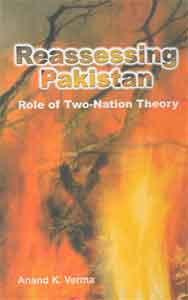The British Approach
The British Government in London was not taken in by such posturing. Aware that it would be very difficult to maintain a colonial empire after World War II and mindful of the strong adverse sentiment generated by the Quit India movement of 1942, London was now in a mood to give self rule to India as early as possible.
| Editor’s Pick |
The arrangements for the British departure from the subcontinent and transfer of power to the Indians were to be made in consultation with them. Since they did not recognise Muslims in India to be a nation, the federal framework was the point of their framework. The British regarded Muslims only as a minority, which could not be allowed to place a veto on the advance of the majority.15 This was the conviction of the British Labour Government, which came into power in 1946. The earlier government of Winston Churchill had other plans, which will be referred to in Chapter V.
League Gains Support
The provincial elections had become overdue and were held in 1946. The League leaders, Jinnah, Liaqat Ali Khan, Choudhary Khaliquzzaman, etc. all came from Muslim minority provinces. They realised that they must at all cost build up support in the Muslim majority areas and such support would only be obtained through an intense campaign on communal lines. The political format was kept in a low profile and the religious idiom given the pride of place in the electioneering campaigns. The question of nationhood was hardly ever mentioned but the spectre of Hindu repression was magnified out of all proportions.
Jinnah gave up the veneer of constitutional approach and called for a Direct Action Day to be observed on August 16, 1946 to force the pace of events in his favour.
The strategy worked. The League won 428 seats out of 492 Muslim seats in the provinces and all the Muslim reserved seats in the Central Assembly. The League, formed governments in Sindh and Bengal but in Punjab this honour went to the Unionists who had 88 seats against the League’s 87. The newly enhanced stature of the League made its leaders more intransigent and determined to split the country unless a formula could be devised which would place governance in key sectors of Muslim majority areas in their hands.
The new Labour Government in UK, on assuming power in 1946, announced its readiness to grant independence to India and sent a Cabinet Mission of three ministers to work out a constitutional scheme for transfer of power, while maintaining the integrity of India as a nation. The Mission proposed a loose union with its centre administering defence, foreign affairs and communications, of provinces in communal groupings, which were largely to be autonomous. Also proposed was an interim government at the centre, with five members each from Congress and League, till a Constituent Assembly could be elected. Both parties accepted the proposals but had fundamental reservations, which ultimately led to the rejection of the Cabinet Mission plan. The League’s acceptance was in the hope that it would pave the way for the ultimate creation of Pakistan. The Congress objection was to the parity in the government at the centre. Besides, it insisted that the Constituent Assembly should be free to have the last word on all issues on merits.
 Jinnah now gave up the veneer of constitutional approach and called for a Direct Action Day to be observed on August 16, 1946 to force the pace of events in his favour. The Muslim League government in Bengal announced this day to be a public holiday. The League leaders could sense that the British would now not take too long to leave India, and were ready to create mayhem to press their point. On this day Calcutta suffered in communal riots with 20,000 casualties and 5,000 dead. This was followed by massive killings in Noakhali. The carnages established that the League had become a force to be reckoned with in certain parts of the country.
Jinnah now gave up the veneer of constitutional approach and called for a Direct Action Day to be observed on August 16, 1946 to force the pace of events in his favour. The Muslim League government in Bengal announced this day to be a public holiday. The League leaders could sense that the British would now not take too long to leave India, and were ready to create mayhem to press their point. On this day Calcutta suffered in communal riots with 20,000 casualties and 5,000 dead. This was followed by massive killings in Noakhali. The carnages established that the League had become a force to be reckoned with in certain parts of the country.




